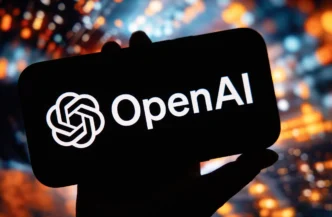Tencent has quietly recruited the core team behind WizardLM, an AI research group formerly under Microsoft, signaling a major talent shift in the global AI arms race.
Can Xu, one of WizardLM’s senior AI researchers, revealed in a recent post on X that the entire team has exited Microsoft to join Hunyuan, Tencent’s dedicated AI research division. Over the past few months, Hunyuan has been ramping up model releases, including tools for video synthesis and 3D object generation. Now, with WizardLM onboard, Tencent appears poised to push its AI portfolio even further.
The collaboration is already showing results. A newly released Hunyuan-branded model, Hunyuan-TurboS 0416, appears to carry WizardLM’s fingerprint. Qingfeng Sun, who identifies as a WizardLM “co-founder,” claimed online that the model outperforms leading open-source competitors, including Google’s Gemma 3 series. This could give Tencent a powerful boost in China’s crowded AI landscape.
Exactly when the team left Microsoft is unclear, and neither company has commented publicly on the transition. But the shift comes after a turbulent chapter in WizardLM’s story.
The group first gained attention last year when it unveiled WizardLM-2, a family of models that it touted as rivaling OpenAI’s GPT-4. But within 24 hours, Microsoft pulled the models from public access, citing a missing step in the release process: toxicity testing. The abrupt takedown didn’t stop developers from archiving the original models and uploading fine-tuned variants elsewhere, preserving WizardLM’s work in the wild.
The deletion also sparked backlash. Clément Delangue, CEO of open-source AI hub Hugging Face, criticized Microsoft for removing other WizardLM models in the process. He pointed out that the takedown disrupted multiple community projects and impacted models that had been downloaded over 100,000 times monthly.
Despite the chaos, the WizardLM team kept building. And Tencent saw potential. In Q1 2025, Tencent credited its 8% year-over-year revenue growth largely to rising AI investment. As part of its aggressive expansion, the company has restructured its Hunyuan division, formed two new internal AI units, and committed over 90 billion yuan (~$12.5 billion) in capital expenditures for the year—with AI as a top priority.
For Tencent, absorbing WizardLM isn’t just about boosting model performance—it’s about positioning itself as a heavyweight in global AI development. And for WizardLM, the move offers a fresh slate, more resources, and fewer corporate constraints.
As Hunyuan gains steam, one thing is clear: WizardLM is no longer just a Microsoft story. It’s now a central piece of Tencent’s AI future.













